Aftershokz Trekz Titanium Review - Bone Conduction Has Never Been So Flexible
Bone conduction of sound is almost a supporting topic for our blog on Geektimes, and we try to "document" almost any news in one way or another related to this topic. This time we invite you to see what the latest version of Aftershokz sports headphones looks like .

The announcement of Trekz Titanium, or rather the announcement of their campaign on Indiegogo , at the time aroused a lot of interest, which was expressed here - in views, and on our side - in applications for this version of headphones.
Today I propose to see what eventually happened, how this version differs from other wireless models and how much it will cost in Russia.

Aftershokz is constantly improving its headset, focusing primarily on a sports audience. Often, marketing efforts in the international market are accompanied by tragic data about cyclists and runners who died and crippled on the roads. And there is no speculation! Indeed, in Europe and in the West, bicycle is an actual means of transportation, but in the general flow with cars it is extremely dangerous.
The key suggestion that Aftershokz makes is maximum control of the situation, because all headphones with bone-conduction sound do not block your ears, and a person can listen to music or talk on the phone, while “staying in touch” with the outside world.
The historical line today includes 6 models: 2 wired and 4 wireless, but some of them have already been discontinued.
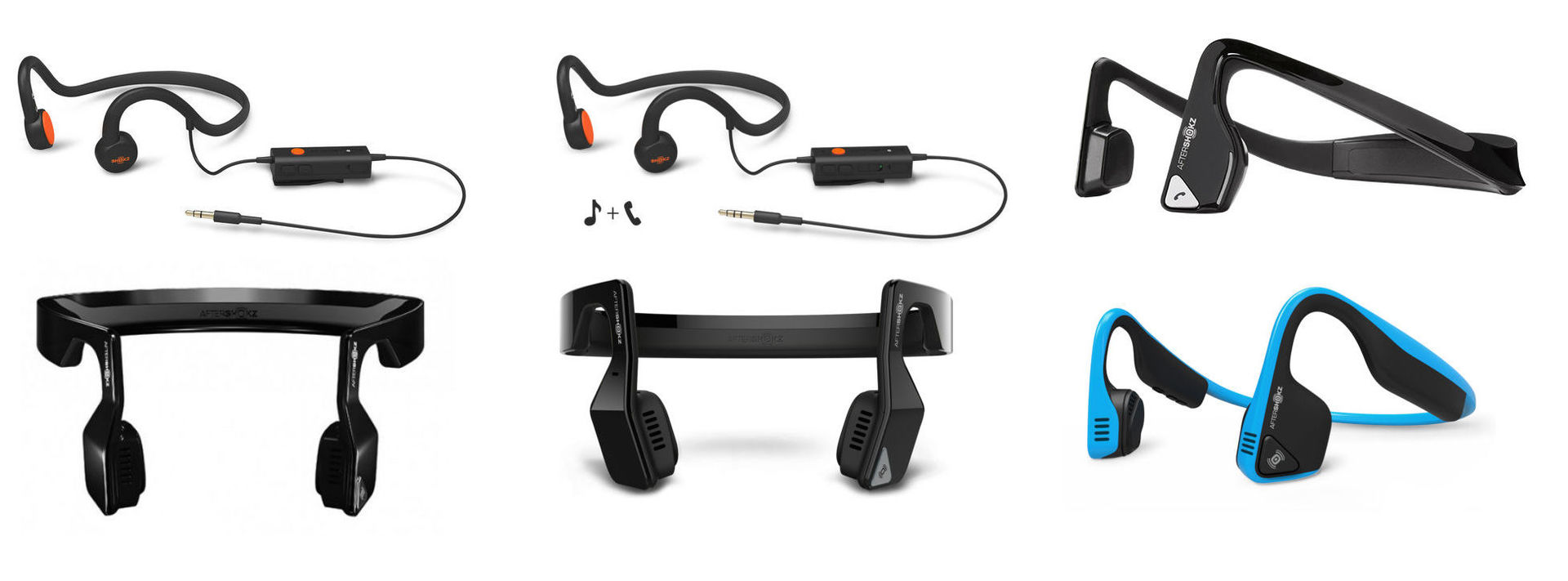
So, for example, at CES2016 it became clear that three versions will become key: Sportz M3 , Bluez 2S and - the latest - Trekz Titanium .
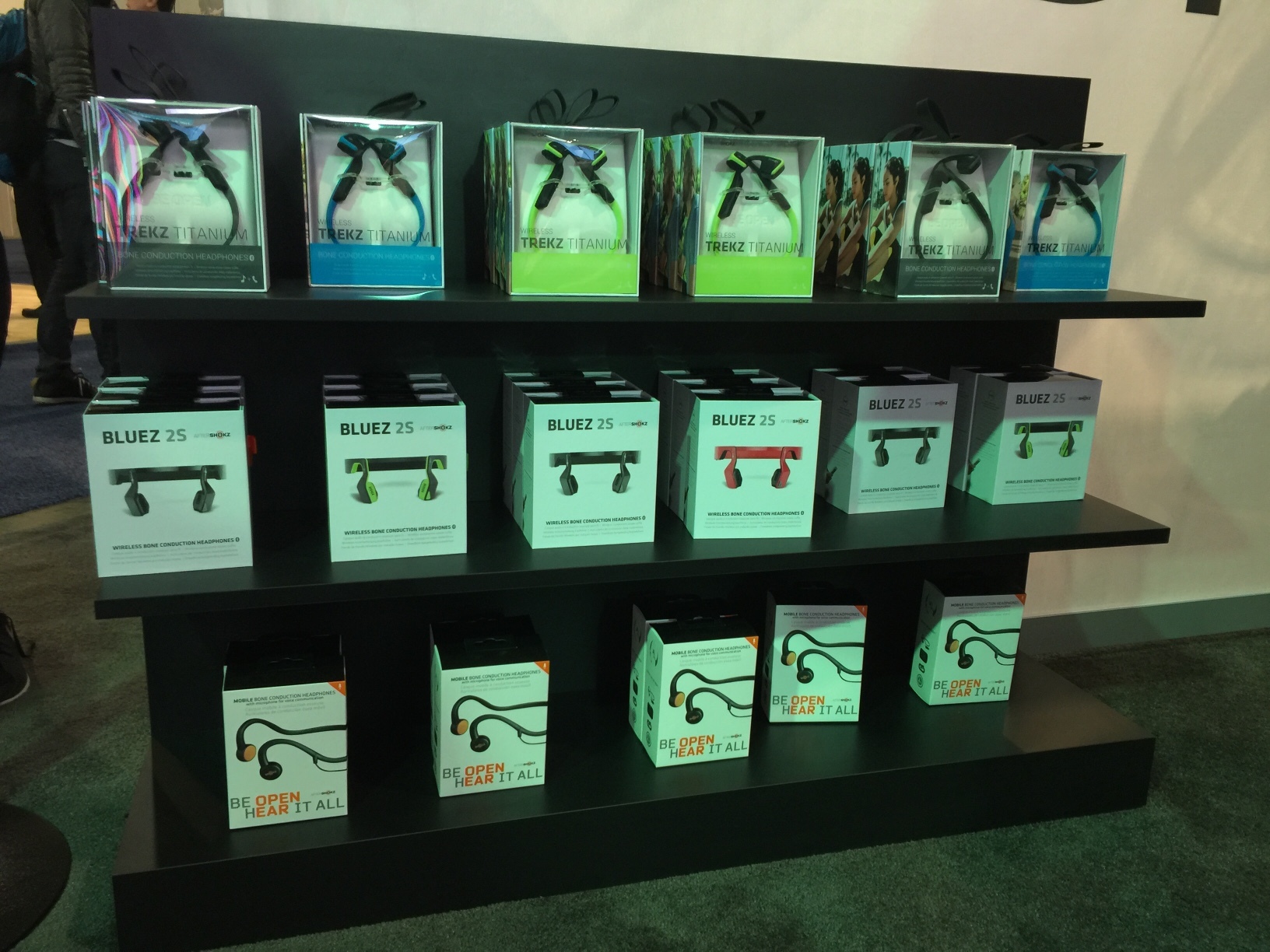
As a small spoiler, we must add that, according to the creators, Trekz - will not be the last model. During the conversation, we clarified that it’s impossible to improve the form all the time, and sooner or later Aftershokz must “acquire” its own application? To which we were confirmed that in one of the future versions sports headphones should be surrounded by several sensors, at least - activity tracking and a heart rate monitor. Also - the “M3” model should appear in the summer in a version close to Trekz, titanium.
Current Aftershokz models have been consistently changing for the better.

So, for starters, the wired Sportz 3 got the letter “M”, which meant an added microphone. Then, for the second version of Bluez, they revised the headband, “scattering” the battery and control buttons on the sides, which made them much more convenient.

Bluez 2s came out with slightly more curved arches in the area of the speakers, which ensured a better fit on the head and, as a result, better audibility.
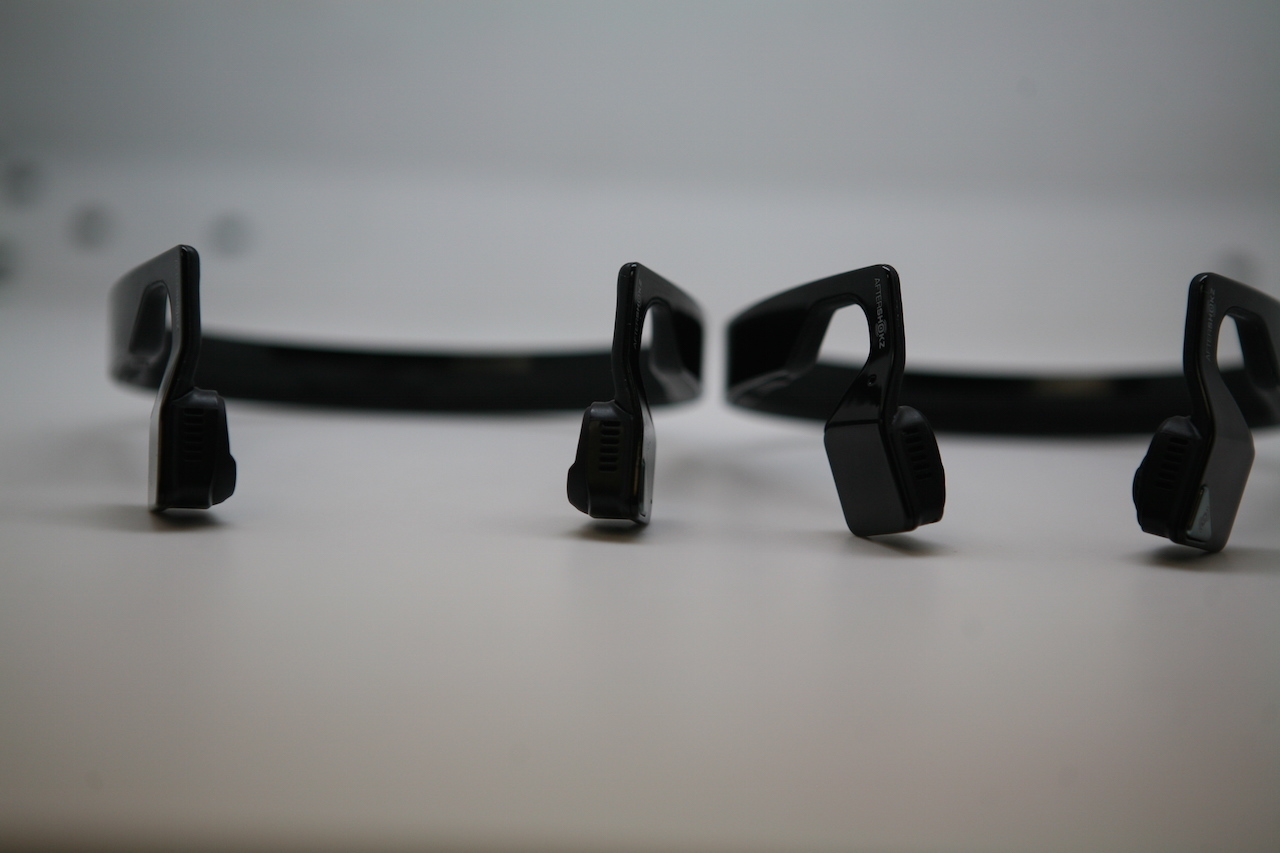
And finally, Trekz Titanium: lighter, more mobile, more compact, more practical!
Aftershokz Trekz Titanium
“Lightness” is emphasized even in the details, and for the first time even a “lite” version of the box was created for Trekz, which does not have a top cover.
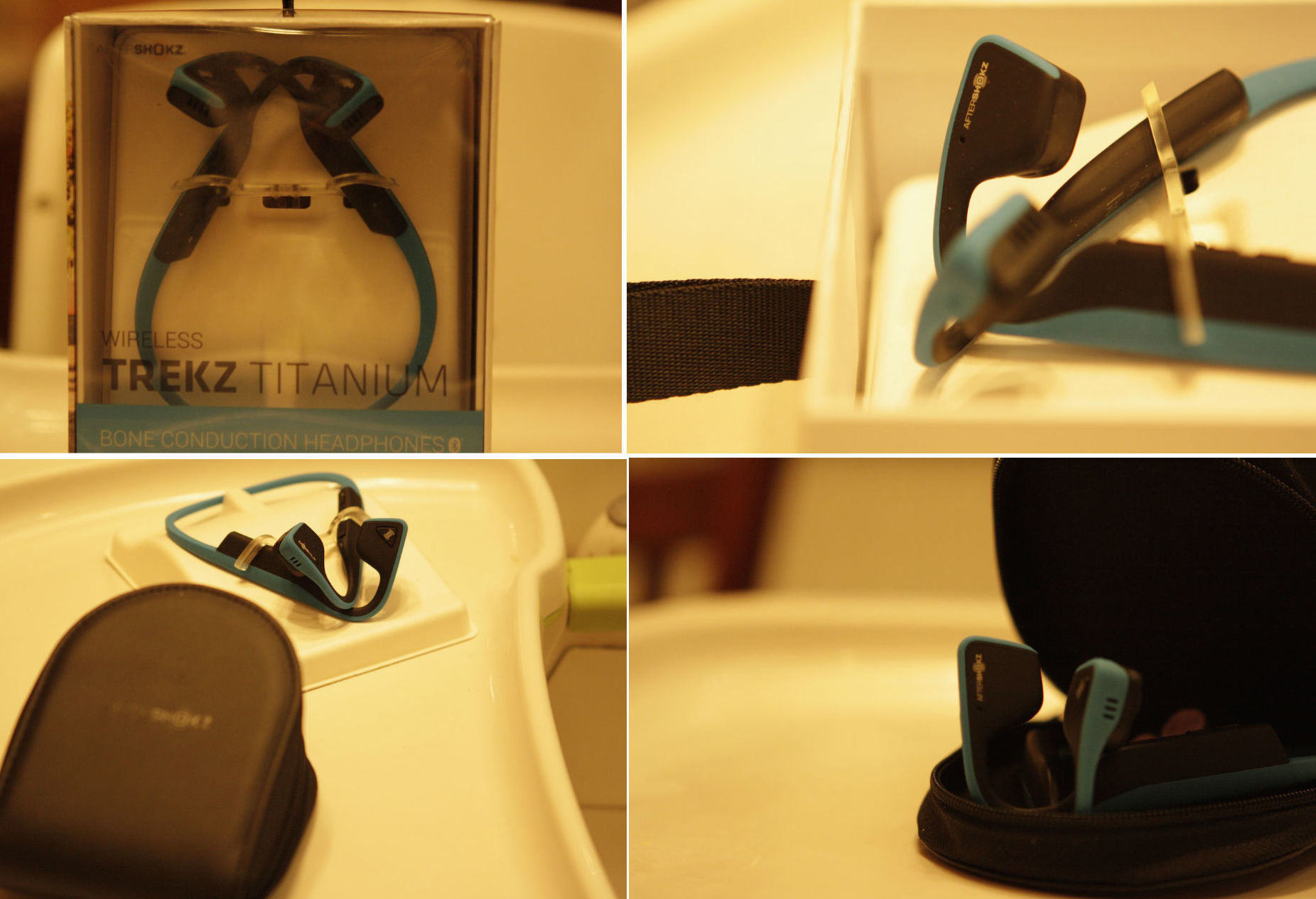
As a transportation tool here - again for the first time - not a bag, but a full bag with a zipper, however, made of leatherette, where not only headphones can be placed, but also some small things, such as keys, notes or plugs included in the kit. Their presence, however, in my understanding is little consistent with the concept of "open ears."
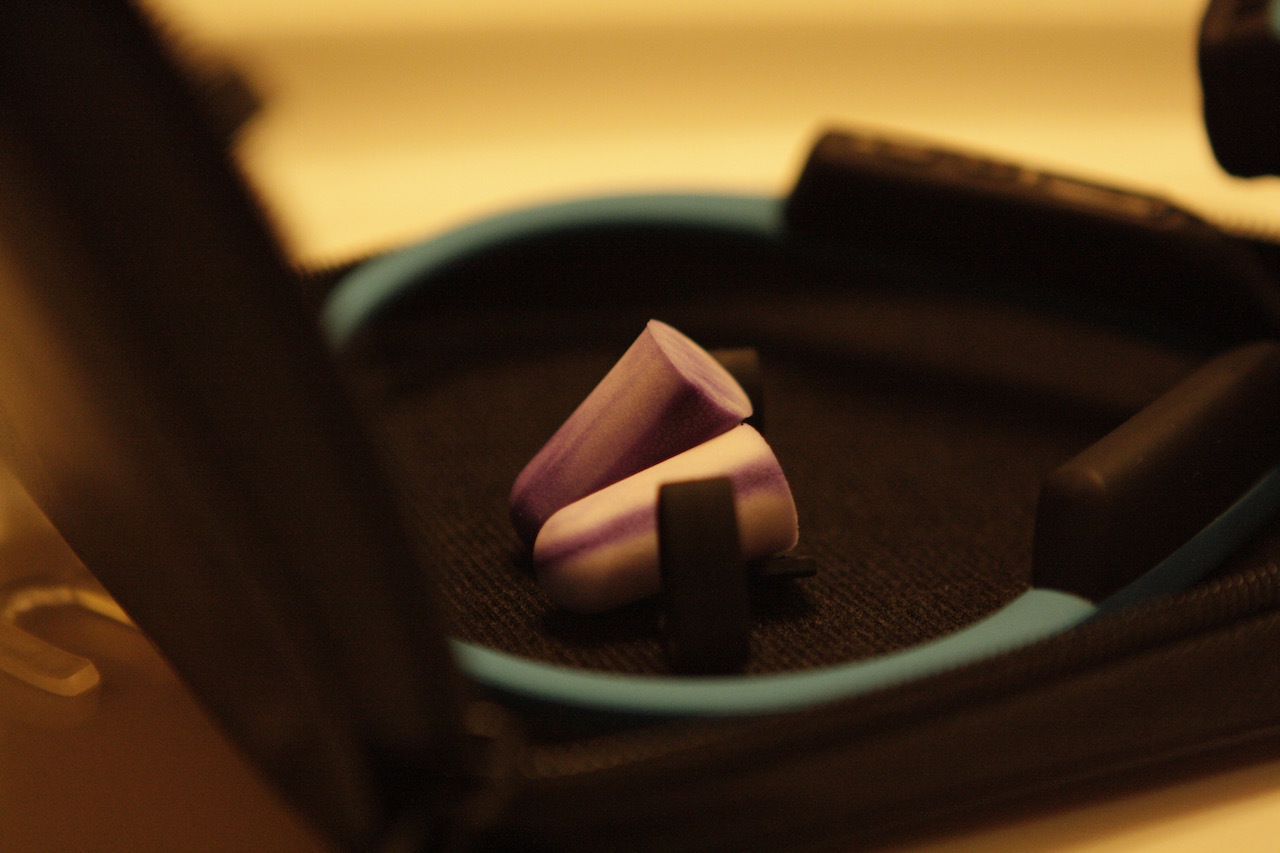
Is she needed? The question is the second. Feature of this version: "indestructibility"! It seemed to me that they can be hidden even in a pocket without risk for shape and design, and they do not stretch as an example to all previous models, returning to their original form.

The main “working” characteristics remained unchanged: the headphones can also be controlled without having to use the phone: turn on / off, adjust the volume, answer the call, but here they came out slightly lightweight. Trekz Titanium removed one of the buttons. More precisely, the power button and the “+” volume up button are combined.
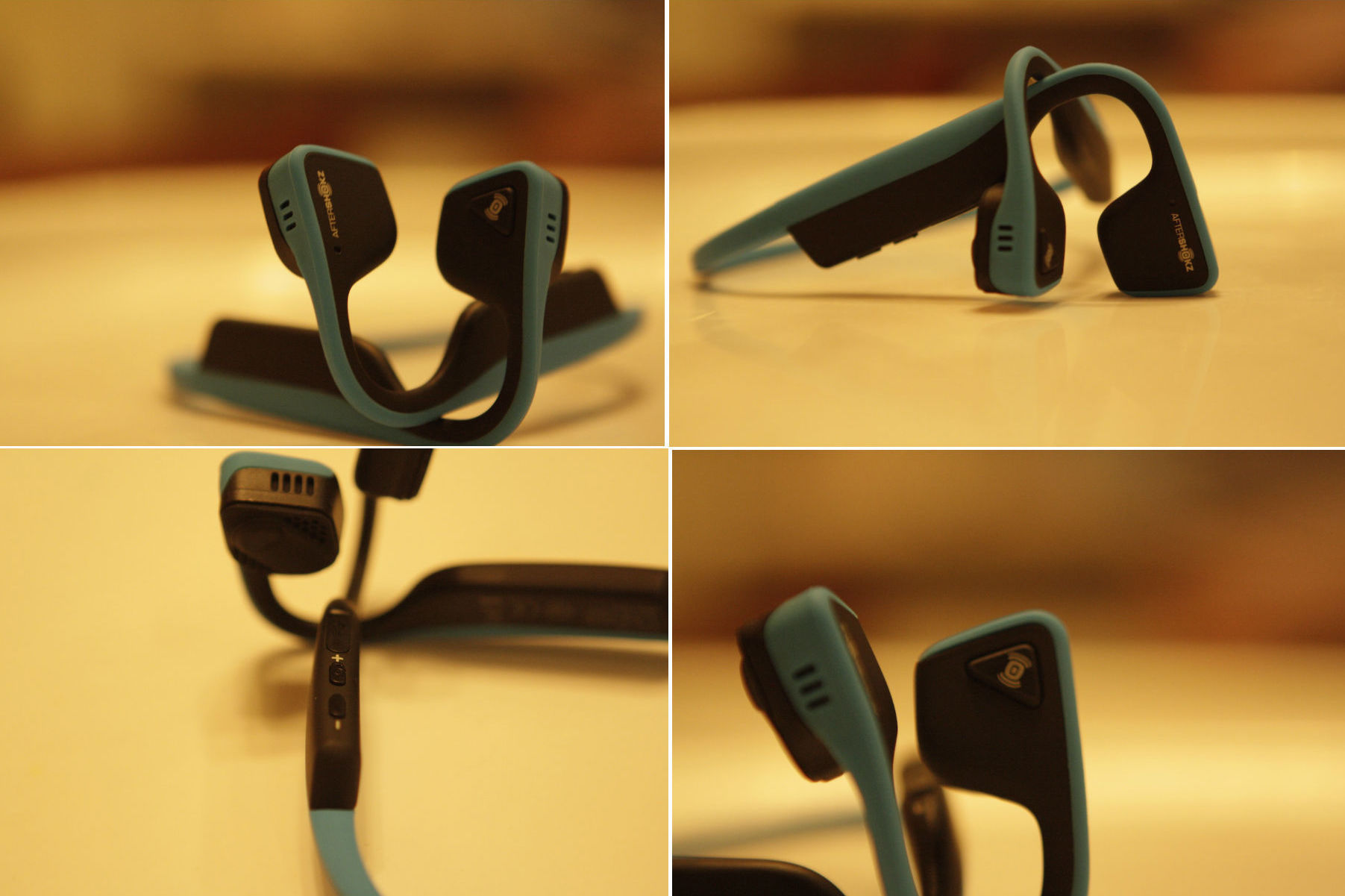
Regarding the Bluez 2s version, the number of holes has also decreased:
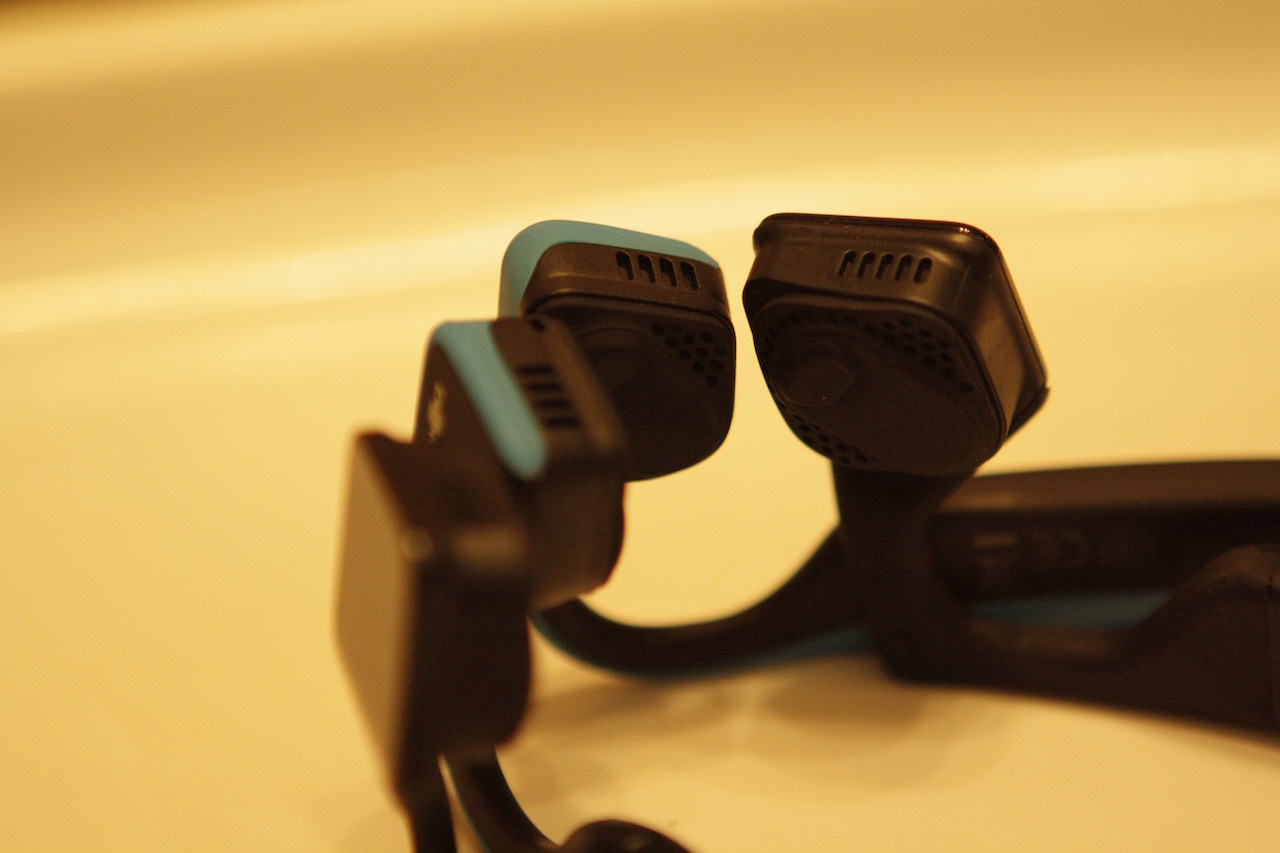
The total weight varies by 8 grams:

And here is a paradox. The trend towards relief fails when it comes to price: Trekz Titanium headphones will cost more than all previous versions: 9,900 rubles .

Of the fun bonuses! It was noticed that when pairing with IOS, the “battery” icon automatically appears, which displays the battery level. On Android, this is not visible:
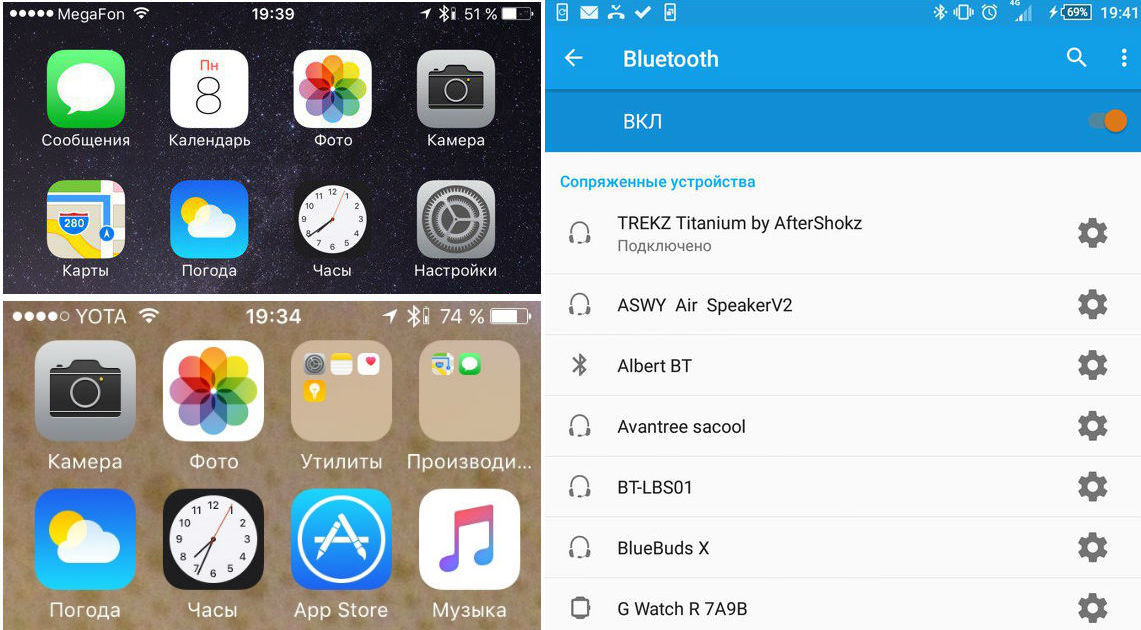
Declared specifications :
Aftershokz Headphone Versions
Today, Aftershokz is a leader in its niche - bone conduction technology headsets, and most of the Chinese clones are somehow written off from the versions of this brand.
The company has come a relatively long way to success, and during that time they also trusted Apple by selling Bluez 2 in its store:

And from recent partnerships, it’s a joint story with Microsoft to create a headset for the hearing-impaired, based on the first version of wireless Bluez.

In this connection, users are also used to making high demands on the headphones of this brand. The main complaints have always been directed against one of the features: other users could hear from a distance what the Aftershokz carrier is. Simply put, sound absorption at 100% did not produce bone conduction, which made the use of headphones not very comfortable in humans.
Since one of the technologies, “PremiumPitch” has grown in version 2S to “PremiumPitch +”, the sound absorption characteristics have improved greatly, and for those who spoke out a little while ago in the comments on our comparison of Bluez2 and Bluez2s, it will be interesting to find out.
In short, then, in my opinion, it is Bluez 2S that comes to the first place in this parameter, overtaking even new Trekz's. I put all the headphones on an equal footing with the same volume, and it’s already almost half a meter that it’s impossible to play 2S (amateur quality, it’s better to wear headphones):
Bluez:
Bluez 2:
Bluez 2S:
Trekz Titanium:
By the way, Bluez 2S is the only model that I normally heard on the subway, though I set the phone to full volume and turned on the studio recording.
How it works:
In principle, Aftershokz never concealed the “insides” of their headsets, and we wrote more than once about how bone conduction is used and why it is used in sports, medicine, the army, etc.

Moreover, the technology is used for fun. For example, recently, based on CES, we wrote how you can listen to music through your finger, using just the bone conduction technology, as demonstrated by one of the Samsung divisions.

The announcement of Trekz Titanium, or rather the announcement of their campaign on Indiegogo , at the time aroused a lot of interest, which was expressed here - in views, and on our side - in applications for this version of headphones.
Today I propose to see what eventually happened, how this version differs from other wireless models and how much it will cost in Russia.

Aftershokz is constantly improving its headset, focusing primarily on a sports audience. Often, marketing efforts in the international market are accompanied by tragic data about cyclists and runners who died and crippled on the roads. And there is no speculation! Indeed, in Europe and in the West, bicycle is an actual means of transportation, but in the general flow with cars it is extremely dangerous.
The key suggestion that Aftershokz makes is maximum control of the situation, because all headphones with bone-conduction sound do not block your ears, and a person can listen to music or talk on the phone, while “staying in touch” with the outside world.
The historical line today includes 6 models: 2 wired and 4 wireless, but some of them have already been discontinued.

So, for example, at CES2016 it became clear that three versions will become key: Sportz M3 , Bluez 2S and - the latest - Trekz Titanium .

As a small spoiler, we must add that, according to the creators, Trekz - will not be the last model. During the conversation, we clarified that it’s impossible to improve the form all the time, and sooner or later Aftershokz must “acquire” its own application? To which we were confirmed that in one of the future versions sports headphones should be surrounded by several sensors, at least - activity tracking and a heart rate monitor. Also - the “M3” model should appear in the summer in a version close to Trekz, titanium.
Current Aftershokz models have been consistently changing for the better.

So, for starters, the wired Sportz 3 got the letter “M”, which meant an added microphone. Then, for the second version of Bluez, they revised the headband, “scattering” the battery and control buttons on the sides, which made them much more convenient.

Bluez 2s came out with slightly more curved arches in the area of the speakers, which ensured a better fit on the head and, as a result, better audibility.
And finally, Trekz Titanium: lighter, more mobile, more compact, more practical!
Aftershokz Trekz Titanium
“Lightness” is emphasized even in the details, and for the first time even a “lite” version of the box was created for Trekz, which does not have a top cover.

As a transportation tool here - again for the first time - not a bag, but a full bag with a zipper, however, made of leatherette, where not only headphones can be placed, but also some small things, such as keys, notes or plugs included in the kit. Their presence, however, in my understanding is little consistent with the concept of "open ears."

Is she needed? The question is the second. Feature of this version: "indestructibility"! It seemed to me that they can be hidden even in a pocket without risk for shape and design, and they do not stretch as an example to all previous models, returning to their original form.

The main “working” characteristics remained unchanged: the headphones can also be controlled without having to use the phone: turn on / off, adjust the volume, answer the call, but here they came out slightly lightweight. Trekz Titanium removed one of the buttons. More precisely, the power button and the “+” volume up button are combined.

Regarding the Bluez 2s version, the number of holes has also decreased:

The total weight varies by 8 grams:

And here is a paradox. The trend towards relief fails when it comes to price: Trekz Titanium headphones will cost more than all previous versions: 9,900 rubles .

Of the fun bonuses! It was noticed that when pairing with IOS, the “battery” icon automatically appears, which displays the battery level. On Android, this is not visible:

Declared specifications :
- Material: Premium titanium case provides strength, durability and design flexibility.
- Platform: Android, IOS, Mac, etc. Pair with any device that supports Bluetooth.
- Headphone Type: Wireless
- Mount Type: Nape
- Speaker Type: Bone Conductivity Sensors
- Sound Mode: Stereo
- Range: 20 Hz - 20 kHz
- Maximum sound pressure: 100 dB
- Built-in microphone: yes
- Microphone Sensitivity: 41dB
- Connection Type: Bluetooth v. 4.0
- Supported Profiles: Advanced Audio Distribution Profile (A2DP)
- Audio / Video Remote Control Profile (AVRCP)
- Headset Profile (HSP)
- Hands-Free Profile (HFP)
- Range: Reliable wireless connection in the range of 10 m.
- Battery: Li-ion
- Operating time: The battery lasts up to 6 hours without recharging, in the continuous use of headphones
- Charging time: 1.5 hours
- Protection: IP55 certified.
Aftershokz Headphone Versions
Today, Aftershokz is a leader in its niche - bone conduction technology headsets, and most of the Chinese clones are somehow written off from the versions of this brand.
The company has come a relatively long way to success, and during that time they also trusted Apple by selling Bluez 2 in its store:

And from recent partnerships, it’s a joint story with Microsoft to create a headset for the hearing-impaired, based on the first version of wireless Bluez.

In this connection, users are also used to making high demands on the headphones of this brand. The main complaints have always been directed against one of the features: other users could hear from a distance what the Aftershokz carrier is. Simply put, sound absorption at 100% did not produce bone conduction, which made the use of headphones not very comfortable in humans.
Since one of the technologies, “PremiumPitch” has grown in version 2S to “PremiumPitch +”, the sound absorption characteristics have improved greatly, and for those who spoke out a little while ago in the comments on our comparison of Bluez2 and Bluez2s, it will be interesting to find out.
In short, then, in my opinion, it is Bluez 2S that comes to the first place in this parameter, overtaking even new Trekz's. I put all the headphones on an equal footing with the same volume, and it’s already almost half a meter that it’s impossible to play 2S (amateur quality, it’s better to wear headphones):
Bluez:
Bluez 2:
Bluez 2S:
Trekz Titanium:
By the way, Bluez 2S is the only model that I normally heard on the subway, though I set the phone to full volume and turned on the studio recording.
How it works:
In principle, Aftershokz never concealed the “insides” of their headsets, and we wrote more than once about how bone conduction is used and why it is used in sports, medicine, the army, etc.

Moreover, the technology is used for fun. For example, recently, based on CES, we wrote how you can listen to music through your finger, using just the bone conduction technology, as demonstrated by one of the Samsung divisions.

- The cost of Aftershokz Trekz Titanium is 9 900 rubles .
